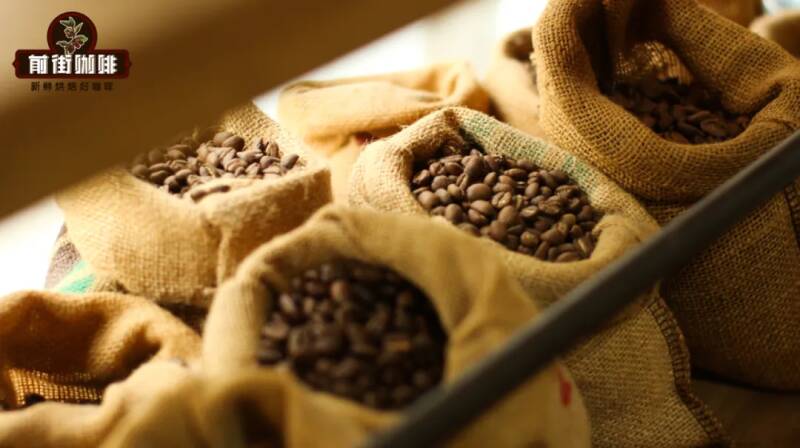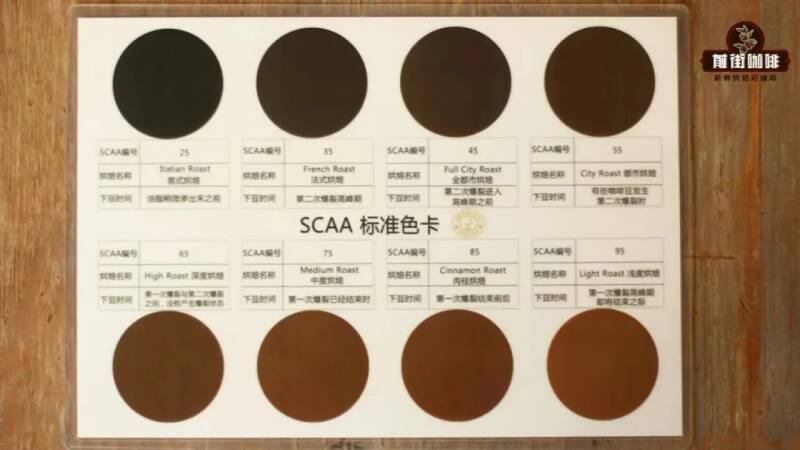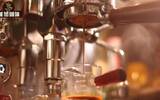What is the difference in the degree of coffee roasting? What is the difference between deep-roasted coffee beans and lightly roasted coffee beans? Which degree of roast coffee is the most refreshing?
As we all know, coffee beans have to be roasted before they can be used as raw materials for coffee production. But! Yes! The roaster's goal in roasting coffee beans is not just to cook the coffee. Because, the aroma and taste of coffee are deeply affected by the degree of roasting! The performance of the same bean will be significantly different at different degrees of baking.

So what's the difference? This is the theme that Qianjie will share today: how the degree of roasting affects coffee, and how coffee will behave differently at different levels of roasting!
How do you divide the degree of baking? First, let's briefly introduce the performance of coffee beans in the baking process: in the process of roasting into ripe beans, raw coffee beans will gradually experience dehydration and yellowing with the loss of water, and then burst and dense. Because at the beginning of the first explosion, it means that the coffee beans are ripe, if we do not intend to stop at this time, and still want to continue cooking, then the coffee beans will experience a second explosion, a second explosion. Since there is no strict standard for the degree of baking, we can find that everyone has a different understanding of the degree of baking. For example, Mr. A thinks that moderate baking is deep baking in Mr. B's eyes. Therefore, in order to unify cognition as much as possible and reduce the differences in communication, SCAA uses infrared caramelization tester technology to identify the color value of coffee beans (color of bean surface), so as to distinguish the degree of roasting.

As can be seen from the picture, the roasting degree of coffee beans is divided into eight parts, the number from large to small, and the roasting from shallow to deep. We can take a shallow look, we are not commonly used in real life, because it is difficult for us to judge the color value of coffee beans and what kind of roasting coffee beans belong to. In addition, coffee will also be different because of the sugar content of the skin, the degree of color when roasting will also be affected, if you rely solely on color to distinguish, it will easily lead to misunderstanding. Therefore, this value can only be used as a baking reference for bakers. Generally speaking, if we want to judge the roasting degree of a coffee bean, in addition to the appearance color, we have to combine the shape and taste of the coffee bean before we can make a conclusion on the roasting degree of the bean, and then simply divide it into light, medium and deep roasting.
How does roasting affect coffee? From a physical point of view, the effect of baking on beans is mentioned in the front street: shape (volume) and color (color). The deeper the roasting of the coffee beans, the higher the expansion rate (bigger) and the darker the color (explained later). In addition, coffee beans will become more and more crisp and have less moisture content. Brittle beans make grinding and extraction easier! The decrease of moisture content combined with the increase of expansion rate will reduce the density of beans, that is, the deeper the roasting of coffee beans, the lower the density.
From a chemical point of view, the effect of baking on beans is: taste! It means the display of aroma and the change of taste. When coffee beans are out of the dehydration period during roasting, as long as the moisture content is low enough, the beans will immediately enter two stages of non-enzymatic browning: Maillard reaction and caramelization reaction. Because these two reactions in front of the street have been discussed in detail, so here is only a brief explanation! Maillard reaction, also known as Mena reaction, is crucial to the formation of coffee aroma, because many coffee aroma and taste are produced by Maillard reaction! Not only that, the color change of coffee beans is also shown by Maillard reaction, from which the classical Maillard color system gets its name, while caramelization begins to occur at the time of the bean explosion, which decomposes and transforms the residual sugar in the coffee beans. let the coffee beans on the original basis of further browning, and then develop a new aroma, especially to enhance the bitterness of coffee.
The transformation of a bean from light baking to deep baking can be completed in just a few minutes, with a temperature difference of about 10 °C, but earth-shaking changes have taken place in taste and aroma. Shallow baking refers to the beans baked during the period from the middle of an explosion to the end of an explosion! At this time, the beans because the organic acids in the body have not been completely decomposed, so we can feel the obvious sour taste from the coffee, the bitter taste is less, the aroma is very complex and rich. For example, the light-baked red cherries give off the acidity of berries and lemons, as well as the aromas of strawberries and wine.
Moderate roasting refers to the coffee beans baked from the end of the first explosion to the beginning of the second explosion. Because these beans undergo more caramelization, the proportion of sour taste in the whole cup of coffee will be reduced, which is less prominent than the light roasted beans, but the sweetness will be higher! On the other hand, the complexity of aroma will be slightly reduced, which will make other flavors more prominent! The warm sun blend of Qianjie uses medium-baked (moderately dark) red cherries, which are highly sweet, with aromas of caramel chocolate and slightly sour berries.
(by contrast, medium-baked red cherries are darker and larger.) Deep baking refers to beans baked after the second explosion, which is mainly bitter because of a large amount of caramelization. Will have an obvious return to sweet taste. On the other hand, the aroma emitted by the coffee is single, which is not as rich and complex as before. Deep-baked red cherries almost no lemon, berries and other flavor performance, mainly caramel aroma, chocolate, showing a diametrically opposite performance with light roasted coffee. Of course, the same is true in terms of taste. Unlike the light feeling of light roasted coffee, deep roasted coffee has a very mellow and smooth taste. These are the main effects of roasting on coffee. So about what kind of coffee beans are suitable for what kind of baking degree, because the space is too long, save it for next time, Qianjie will make a good analysis and analysis!
-END-
Important Notice :
前街咖啡 FrontStreet Coffee has moved to new addredd:
FrontStreet Coffee Address: 315,Donghua East Road,GuangZhou
Tel:020 38364473
- Prev

What is the difference between fully automatic and semi-automatic coffee machines? Semi-automatic coffee machine recommended! How to operate a semi-automatic coffee machine?
With the popularization of coffee culture, more and more friends are obsessed with the unique drink of coffee. Whenever I don't concentrate enough or start to feel sleepy, I order myself a cup of coffee. This way, it refreshes the mind and satisfies the appetite, which is the best of both worlds. But many friends found that they were interested
- Next

The new production season reduces production by 10%! Vietnam is about to suffer La Niña phenomenon
Recently, according to media reports, feedback data from many international coffee traders shows that they will enter the 2024/25 year of Vietnam coffee in October, but it is expected that Vietnam coffee production will decrease by 10%, and may become the lowest level in nearly 10 years. And due to reports of the return of La Niña phenomenon, cited
Related
- What is the difference between a cake filter cup and a V60 conical filter cup? What are the advantages and disadvantages of the flat-bottomed filter cup brewing solution?
- What is the difference between fine coffee powder and medium coarse coffee powder? Do I need to sift out the fine coffee powder for making coffee by hand?
- Why does hot American coffee taste bitter? Difference in proportional concentration between hot American and ice American
- Is espresso stored overnight in the refrigerator harmful to your body? Is frozen coffee better than freshly ground coffee?
- What parameters and proportions of water temperature should be used to grind and brew fresh coffee beans? Why can't I drink freshly roasted coffee right away?
- Customers have "changed" Manner's new products! Shop assistant: Please don't mess around!
- Remove sockets in customer areas at Starbucks stores?! Netizen: I won't go if I really tear it down
- What is the difference between the taste steps of sun-dried coffee and washed coffee? Why is sun-cured coffee sweeter and washed coffee sour?
- The recipe for salty grapefruit dirty is revealed! Coffee Festival salty grapefruit dirty coffee making materials parameters ratio milk share!
- How about the flavor of Sunlight 74158 at Sidamo Banshaha Mathieu Processing Factory in Ethiopia? 74158 Share the proportion of coffee brewing parameters!

